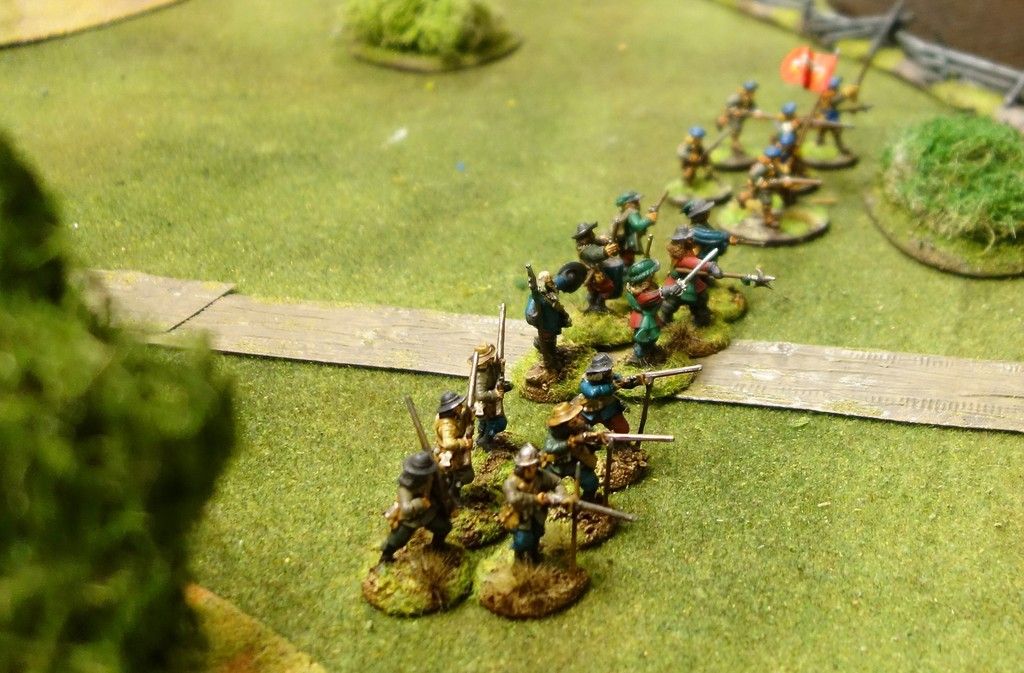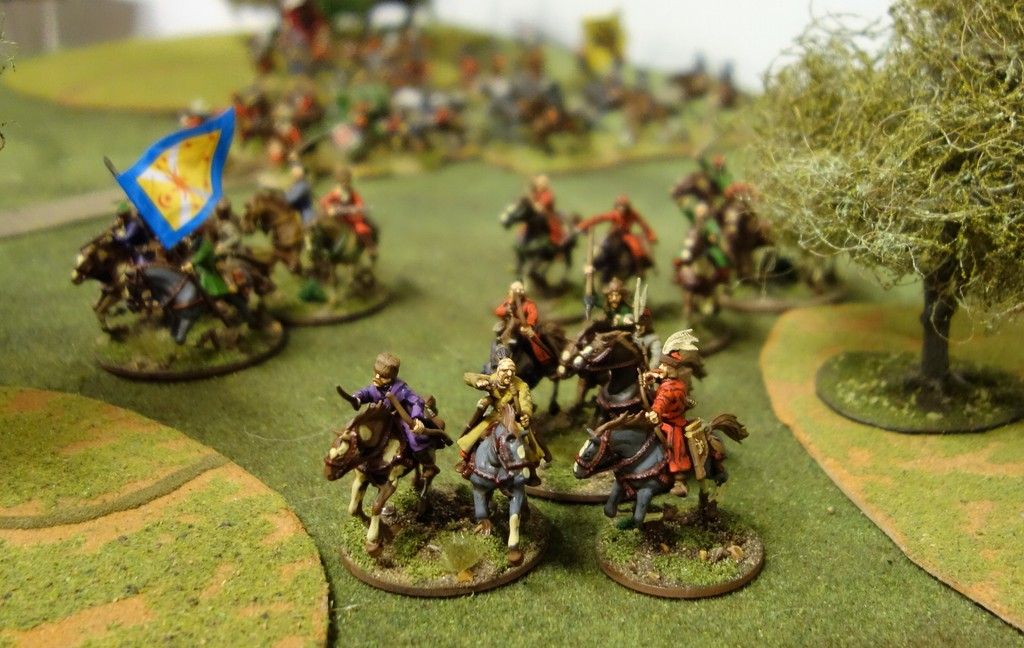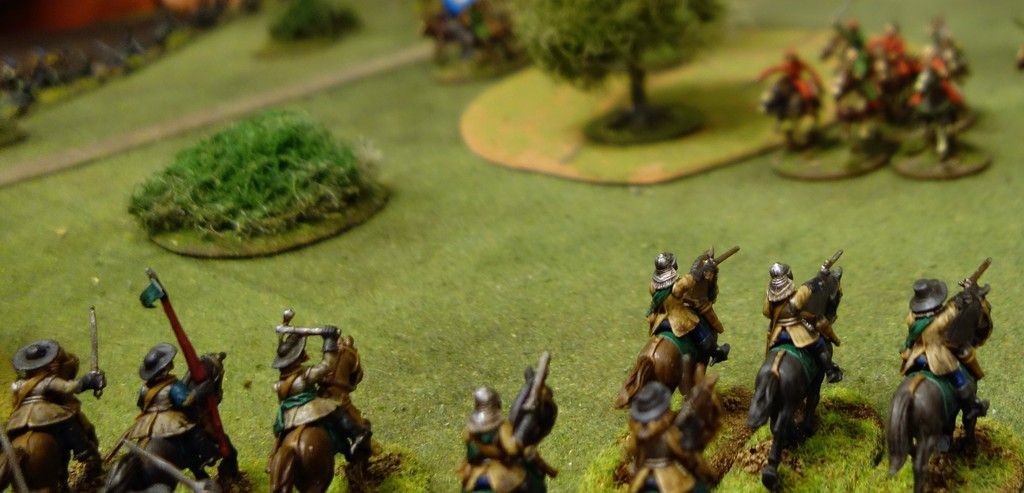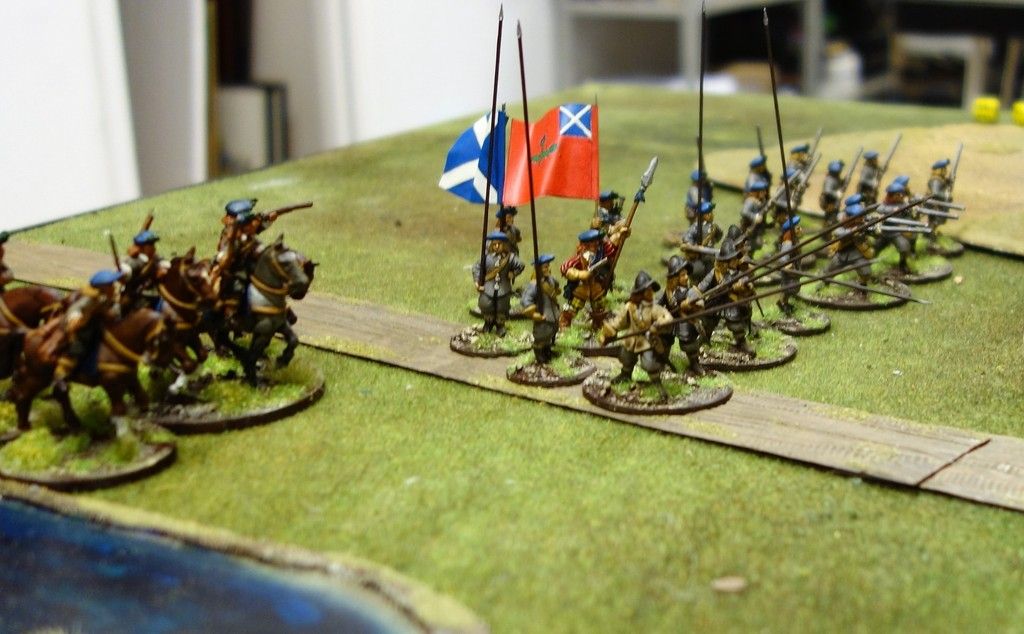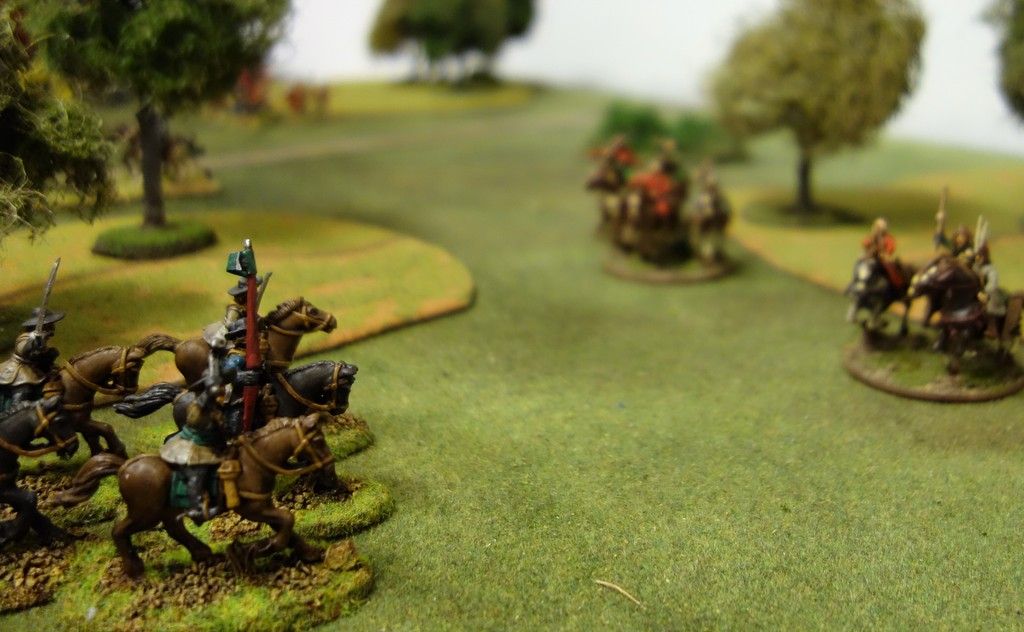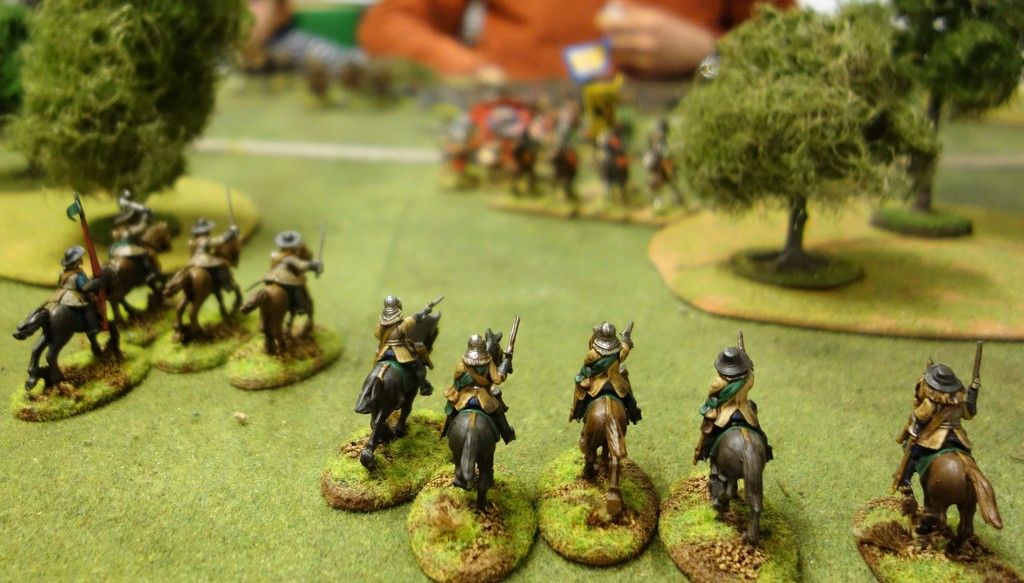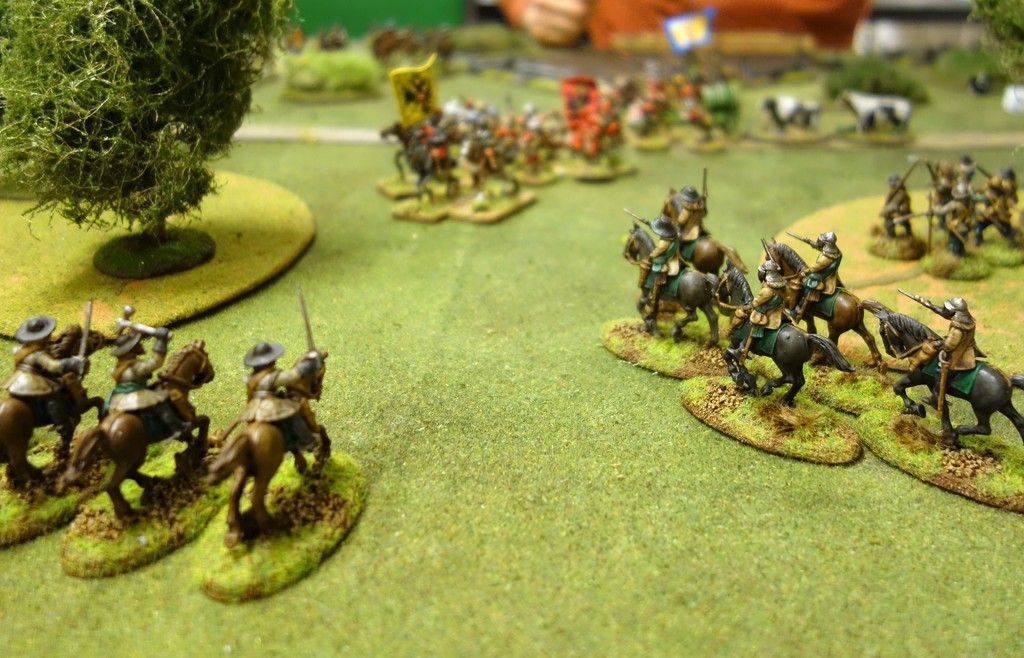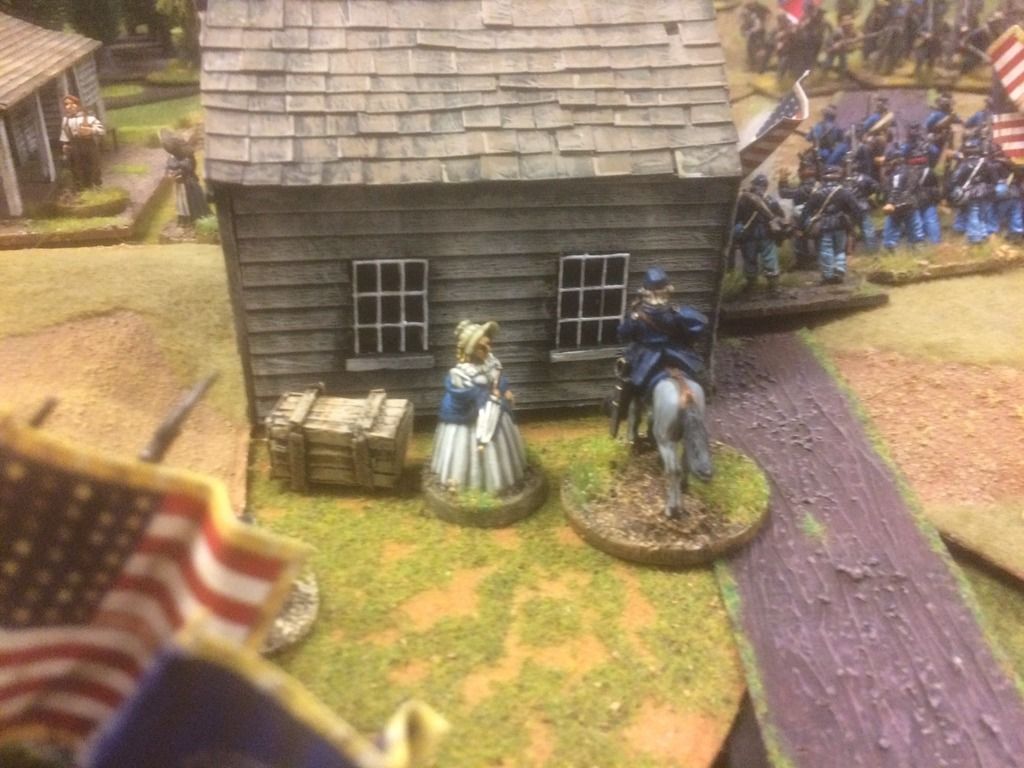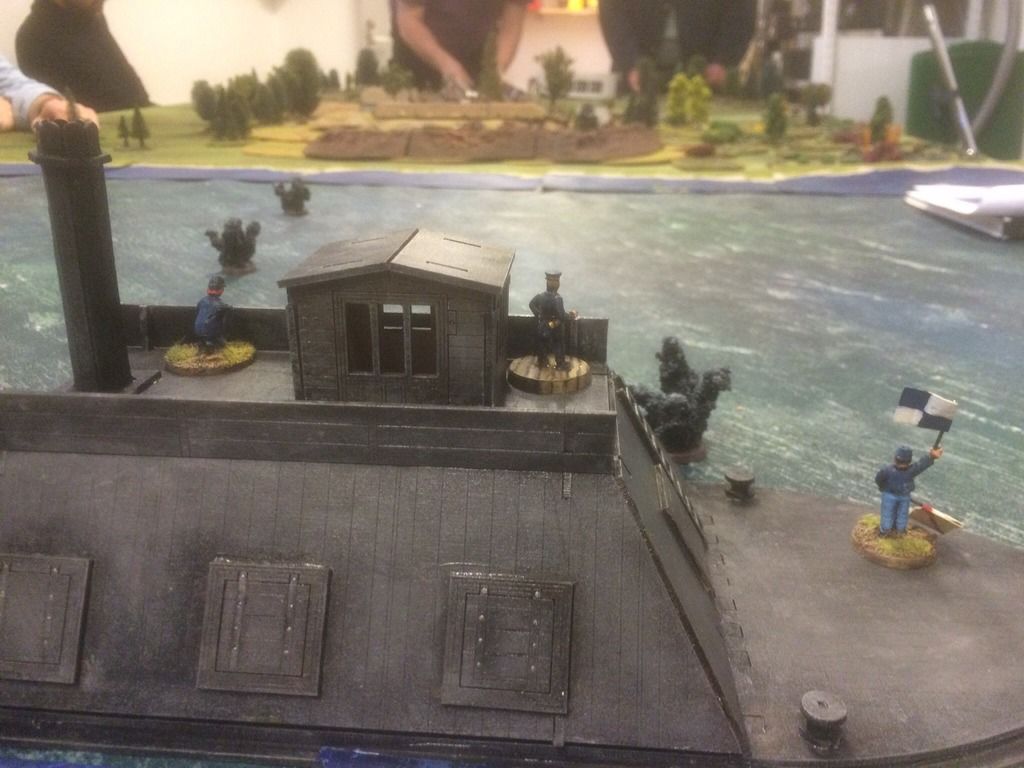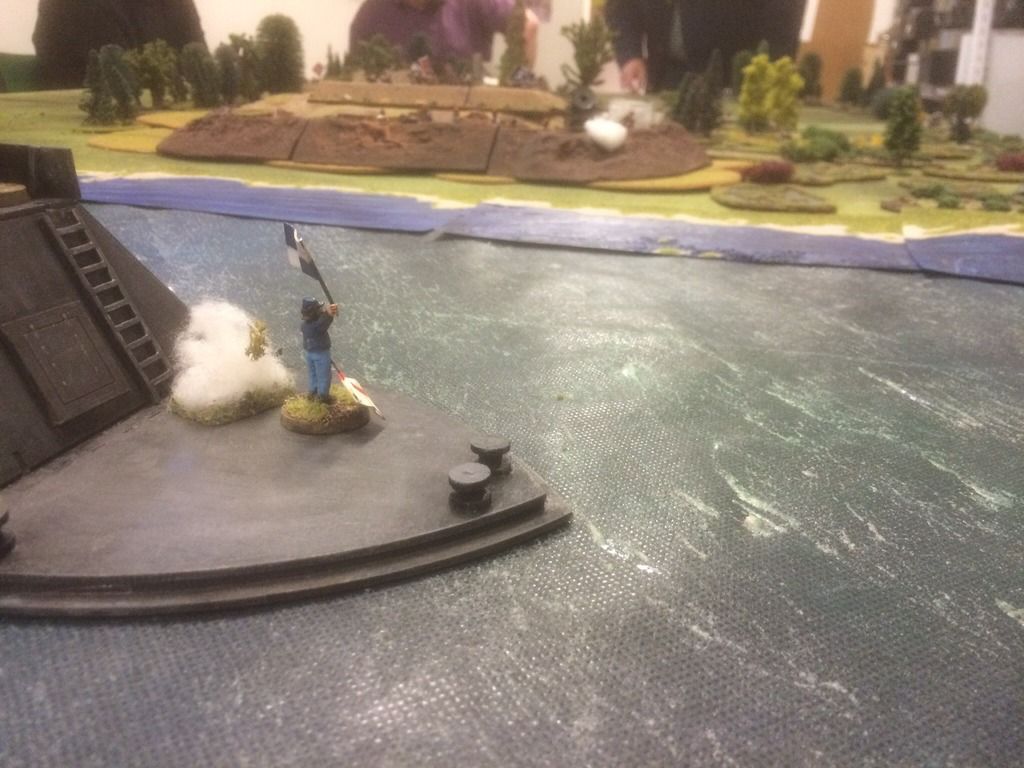Earlier this week we played another game of Pikeman's Lament as part of our ongoing campaign set during the war between Sweden and Poland 1625-1629.
This time we played the mission Morning Attack. This involves an attacker assaulting one of the defender's fortified camps after infiltrating a force around the defender's flank.
For this game we really went 'all-in' and used a whopping 54 army points per side. This is probably the maximum size for games played on a regular 6' x 4' table.
In this mission the attacker wins if he has more units inside the defender’s camp at game end than the defender does.
In our game, the Swedes were defending and the Poles attacking.
For details of the OOB, background and some more photos, go to
Dalauppror's blog
The Poles were divided into 2 commands of about 28 army points each.
One command one consisted of Polish units led by Rotameister Janosz Kowalski. There was a unit of Winged Hussars (Elite Aggressive Gallopers) supported by two units of Pancerni (Gallopers) and two units of Hajduk musketeers (Shot).
The other command was led by the notorious turncoat van Kökkenpanne and his Flemish mercenaries. This contained a unit of Curassiers (Elite Trotters), 2 units of Forlorn Hope, one of Pike and one of Shot.
The slander and lies of our Polish enemies can be found at
Skötkonung's blog.
 |
| The Polish Rotameister's forces struggle to get out of the swamps and over the river |
The Swedish force consisted of 3 companies of 18 points each.
Swedish camp garrison commanded by Ensign Håkan Nilsson Skytte
1 x Shot
1 x Commanded Shot
2 x Field Artillery
Scots Reinforcements: Mackay’s Regiment of Foot, commanded by Ensign Edmund Darrcounter
1 x Veteran Pike
1 x Pike
1 x Shot
2 x Commanded Shot
Swedish Reinforcements: Västgöta Regemente, commanded by Lieutenant Henrik af Hunneberg, 'Henrik the Hammer'
2 x Forlorn Hope
1 x Pike
1 x Commanded Shot
The Swedish Garrison command was deployed on table at game start, while the Swedish Västgöta Regiment units and the Scots entered during the game.
The enemy was concentrated on a very narrow front at the very end of the Swedish fortified line. van Kökkenpanne's notorious mercs were composed of a unit of Curassiers (classed as Trotters), a unit of Pike, one of shot and a couple of Forlorn Hope.
This allowed them to bypass most of the fortifications and concentrated their entire force against a single Commanded Shot Unit and a single heavy artillery piece. The other Swedish artillery piece faced an empty field, while the Swedish garrison Shot unit is still in camp.
The scenario started at dawn, where the Swedish garrison guarding the camp finds that the dastardly Poles have infiltrated a force of Pancerni and Winged Hussar cavalry accompanied by a Hajduk through a swamp and a river during the night. At the same time, the treacherous turncoat van Kökkenpanne and his Flemish mercenaries are approaching the bridge.
 |
| The Swedish and Scots reinforcements are on their way. But will they be in time to stop the enemy hordes? |
The Scots started to appear at the short table edge. they did enjoy good command die rolls. No doubt the beneficial effects of a healthy breakfast of whisky and haggis. They did have an awful long way to march before actually meeting the enemy, though....
Unfortunately the initial Swedish and Scottish command rolls weren't that good and while the artillery piece managed to inflict some casualties on the advancing Flemish Pike on the bridge, the rest of the Swedish fire was largely ineffective. The other artillery piece (which was not allowed to move, it's too heavy) managed to pivot to face the enemy coming round the flank.
 |
| The Västgöta Regiment units march towards the enemy. The Scots and the Swedish garrison company in the background |
Already at this point, the enemy concentration of forces proved to be very powerful with lots of enemy units coming in range to fire on the heroic Swedish Commanded Shot and the exposed artillery piece. But at the same time the enemy deployment had inherent problems as a 'traffic congestion' quickly developed with various enemy units blocking the advance and fire of their colleagues.
 |
| Polish units still not out of the river and swamps |
The Poles and Flemish pressed forward as rapidly as the constricting terrain would allow. Both the river and the swamps halved movement for most units, so even with good command rolls by the enemy, the advance was not terribly swift.
In the following couple of turns fortunes were mixed. The brave Swedish Commanded Shot were quickly dispatched by concentrated fire from Polish Haiduks. And the Swedish artillery failed to make much of an impression on the advancing Flemish.
On the other hand, the command die rolls of both the Västgöta Regiment and the Scots were much better and both companies advanced quickly to towards the enemy while the advance of both Poles and Flemish were greatly hampered by congestion and the terrain. The Shot of the Swedish garrison company also made good time and advanced onto the hill facing the combined enemy forces, closely followed by both Scots and Västgöta units.
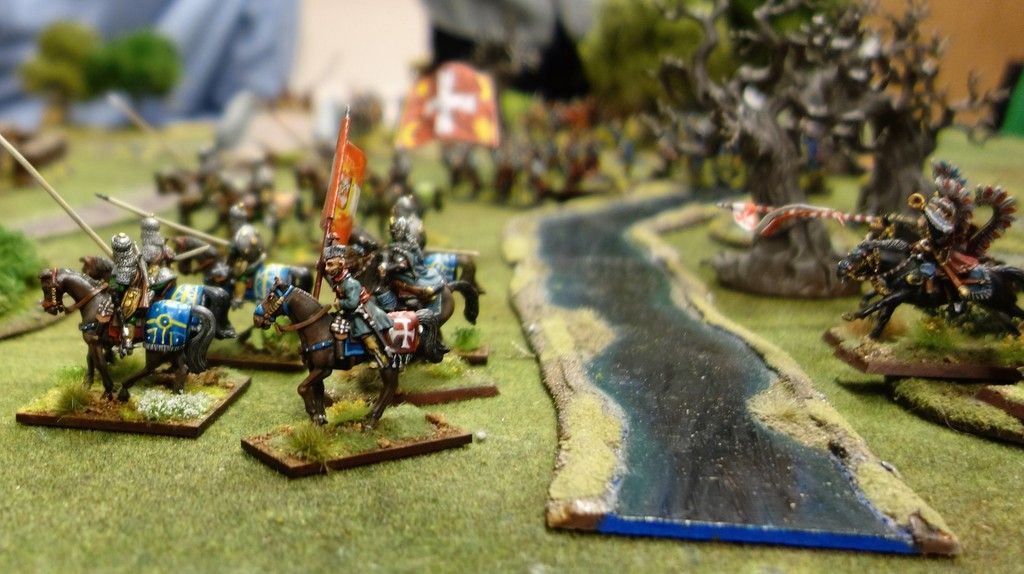 |
| The Polish Pancerny are finally across the river, but the Winged Hussars are still getting their feet wet.... |
The only set back in this was a disastrously bad command roll by the Scots which saw one of the Pike units withdrawn from the field (apparantly the commanding general had decided it was more urgently needed elsewhere. Darn…
The Polish Pancerny cavalry were first across the river and promptly charged our brave units on the hill. They had very mixed fortunes in this. While they managed to inflict some casualties on the Swedish Shot, they were repulsed with losses.
One of the Pancerny unit quickly changed direction and charged our artillery from behind eliminating it. Ouch.
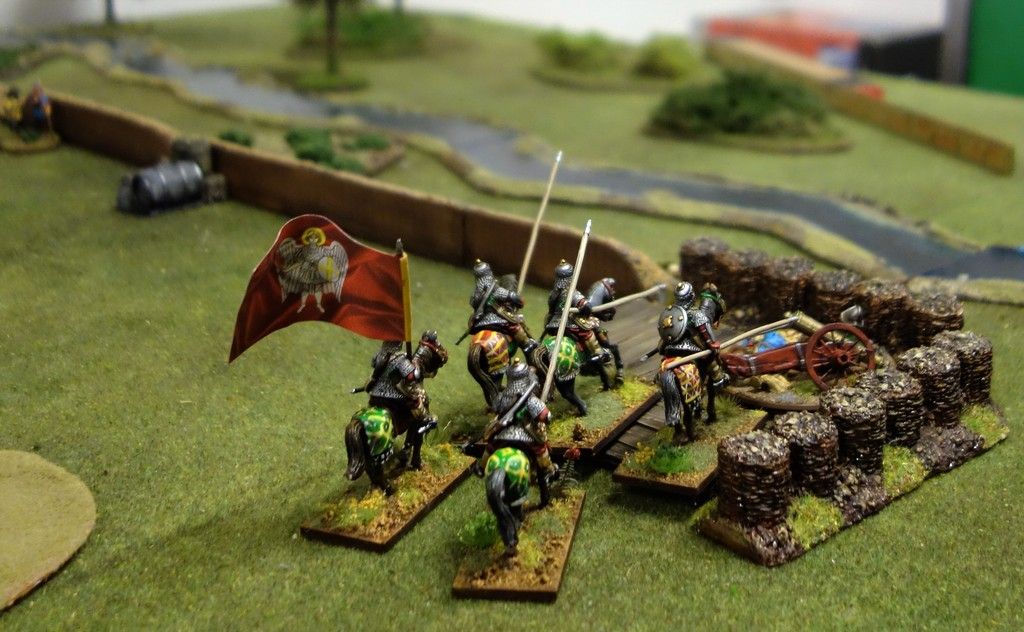 |
| The Pancerny destroy our valiant artillery. But vengeance will be quick |
The other Pancerny was quickly eliminated by a hail of musket fire after charging the garrison Shot.
 |
| The Pancerny charge the Swedish garrison musketeers. and the artillery. |
However, the other Swedish artillery unit had pivoted in place and opened fire together with advancing Scots and avenged the lost artillery by eliminating the Pancerny.
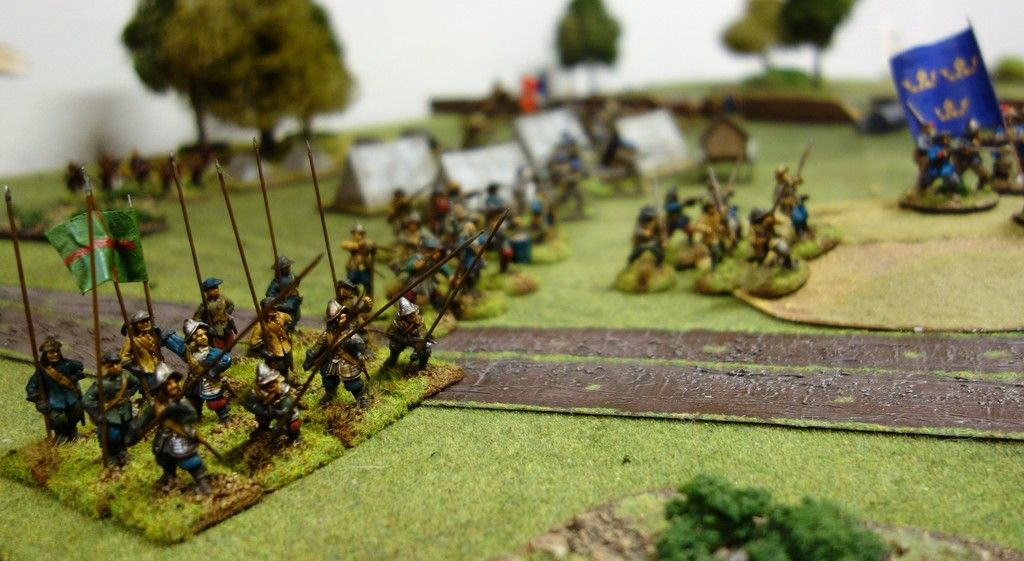 |
| Västgötar and Scots advance to support the garrison Shot unit on the hill. |
The Västgöta units were now racing to support their comrades on the hill.
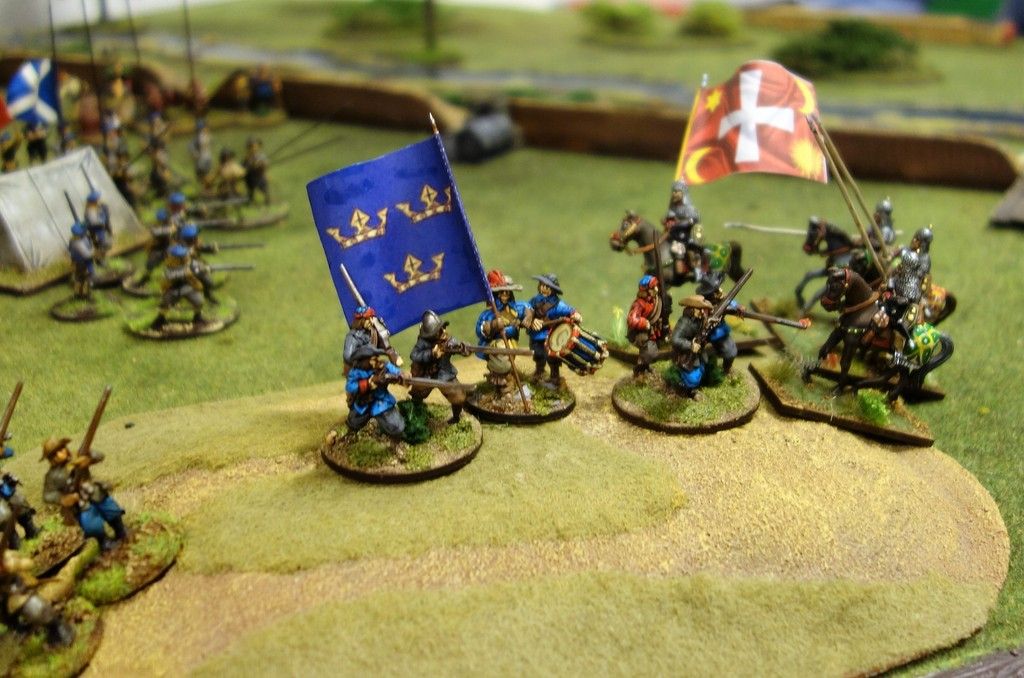 |
| The charge of the Pancerny fails and the cavalry are forced off the hill in disarray. |
The Swedish garrison musketeers are finally forced off the hill, but are replaced by Västgöta units and Scots musketeers.
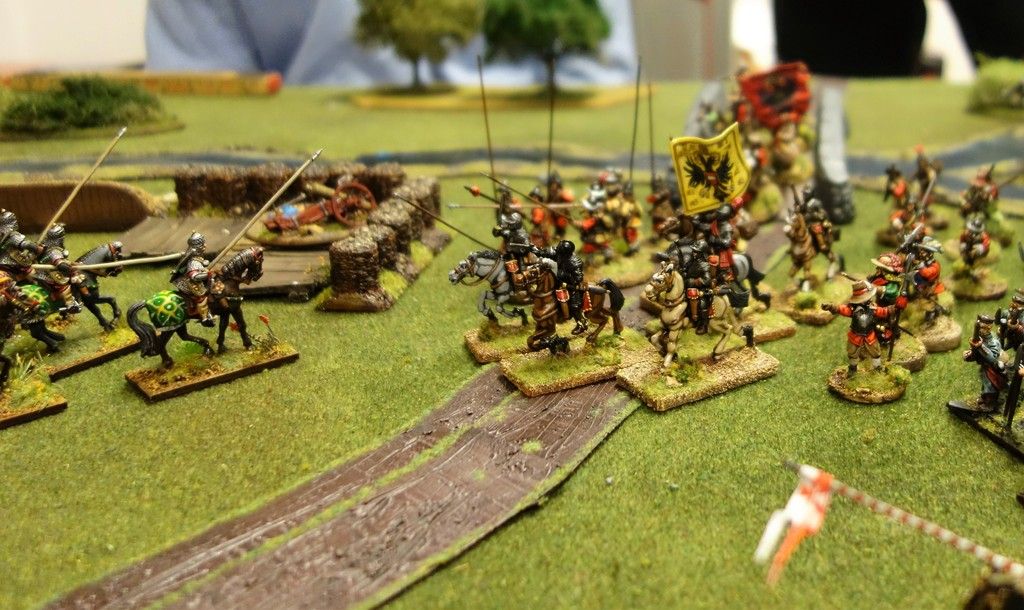 |
| The retreating Pancerny seeking shelter among the advancing Flemish moments before being shot to pieces by the remaining Swedish Artillery |
The Flemish has suffered more than their Polish paymasters from the restricting terrain and the congestion of units and were only now entering the combat in earnest.
 |
| The doughty Västgöta pikemen repulsing the Polish nobles led by the Rotameister himself. |
At the same time the brave Västgöta Pike had advanced far enough to come into charge distance of the enemy Winged Hussars. The Polish nobles are a notoriously impetuous lot and promptly charged the Pike.
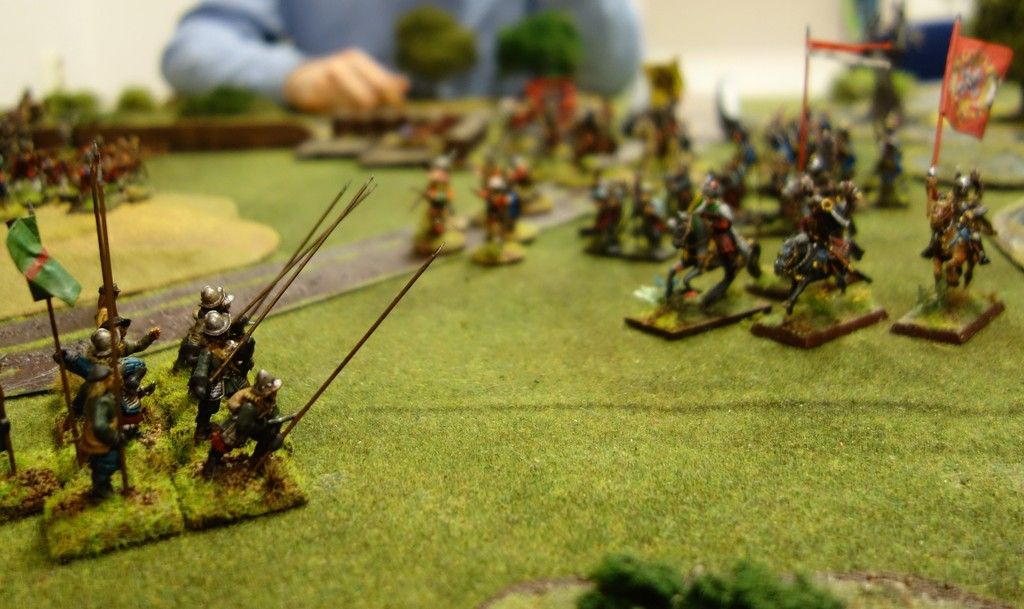 |
| Mutual destruction. The frustrated Winged Hussars reform to try another charge at the stubborn Västgöta pikemen |
The Hussars are ferocious, but they met their match in the Västgöta Pikemen who repulsed them twice and reduced their numbers to less than half before finally going under.
The few surviving Hussars then impetuously charged the Västgöta Commanded Shot on the hill, but were repulsed with further casualties. And finally a salvo of musket fire from the Västgöta Forlorn Hope commanded by Henrik the Hammer himself cut down the evil Rotameister.
 |
| The Polish Rotameister moments before being shot out of the saddle by our marksmen. The Polish Haiduks behind are unable to help their leader |
While this epic battle was going on a great musketry duel was taking place on the hill with massive casualties suffered by both sides. The brave Swedish Shot were forced off the hill, but were replaced by Västgöta Forlorn Hope and Commanded Shot that proceeded to deplete one of the Polish Haiduk units and severely reducing the Flemish Forlorn Hope, before in turn being forced off the hill again by the Flemish Curassiers.
 |
| Västgöta units and some Scots musketeers advance onto the hill and straight into a major fire fight. |
The Flemish Pike and Shot pressed forward and along the redoubt but were met by heavy fire from the remaining Swedish artillery piece and Scots Commanded Shot.
The Flemish Pike were mauled by this fire and fled to the rear, only to be replaced by the Flemish Shot, who also took serious casualties but managed to hang on.
By now, both sides had suffered massive casualties and the battle was drawing to a close. The only remaining Swedish garrison units was the artillery piece and a depleted Shot unit commanded by Ensign Skytte. The lone Västgöta unit still in the field was the Forlorn Hope Commanded by Henrik, while the Polish command only had a single Haiduk unit left. The Scots were also severely weakened, and so were the Flemish mercenaries.
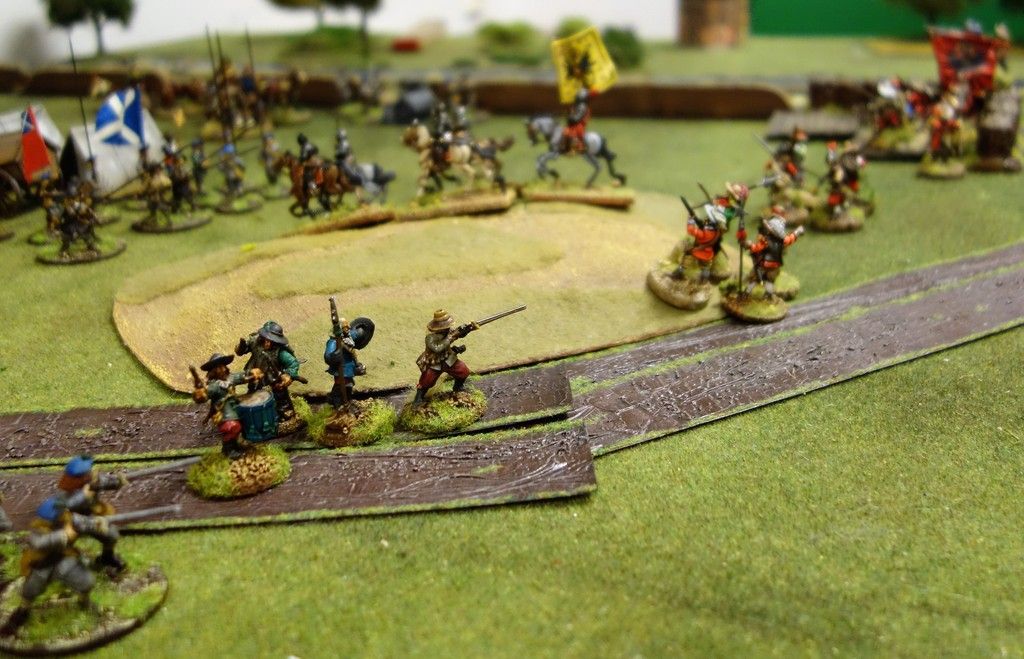 |
| The end is near. The Västgöta Forlorn Hope and Scots Commanded shot destroy the Polish Haiduks and are now reloading to have a go at the Flemish Forlorn Hope |
The end came quickly as the Västgöta Forlorn Hope and a Scots Commanded Shot destroyed Polish Haiduks.
The Flemish Curassiers had finally managed to clear the hill, but it was too late. At this point the battle ended with a Swedish win as the enemy had failed to get a sufficient number of units into the Swedish camp.
A most glorious victory for the Swedish army and our loyal Scots friends.
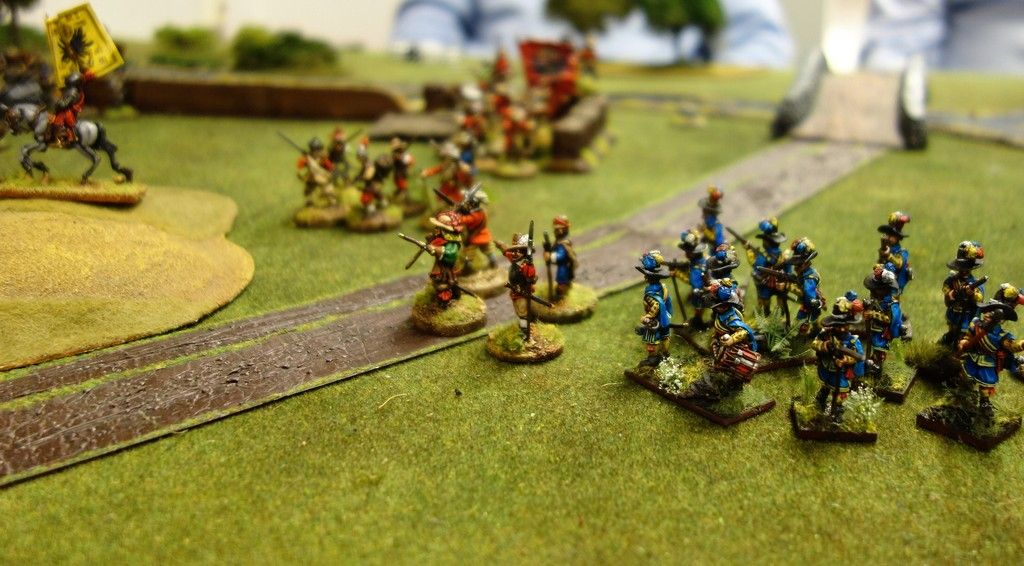 |
| The end. The few remaining Polish and Flemish lack the strength to take the Swedish camp. |
In recognition of this success the Scots commander Edmund Darrcounter was promoted to Lieutenant and gained the trait ’Brave’ (fittingly enough; ’Scotland the Brave’, and all that….). This trait means that units close to their commander get an increased morale bonus due to his inspirational leadership. The playing of bagpipes will no doubt have to be endured at tonight’s celebratory haggis & whisky dinner in the Scottish camp….
At the end of the game we realized that Henrik had also managed to accumulate enough Honour to be promoted to the lofty rank of Captain. The promotion brought with it the trait Tactician. This means that Henrik gains a modifier to the pre-game die roll to determine who is the Attacker. Henrik isn’t quite sure how to use this new ability, but is very happy about the promotion. So in the Västgöta Regiment camp there will also be a major celebration, carefully avoiding the Scots haggis. There will be a large helping of Aquavit for the troops, though.





